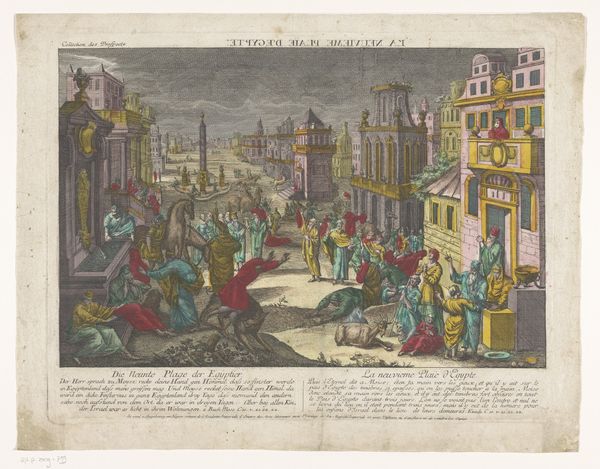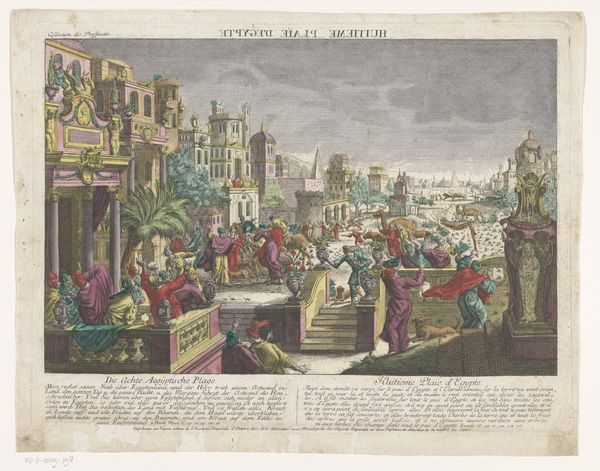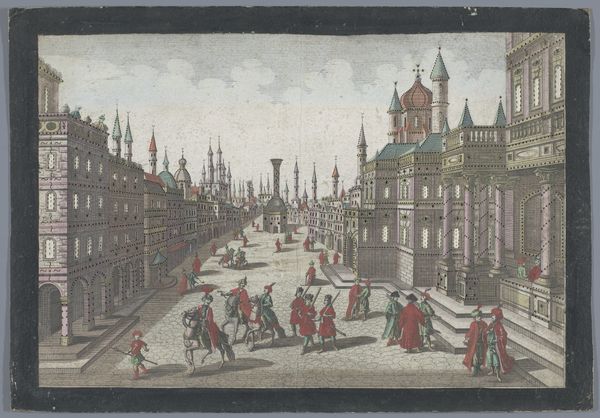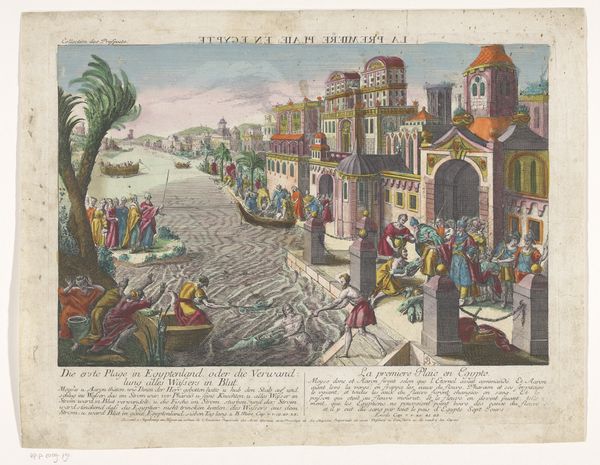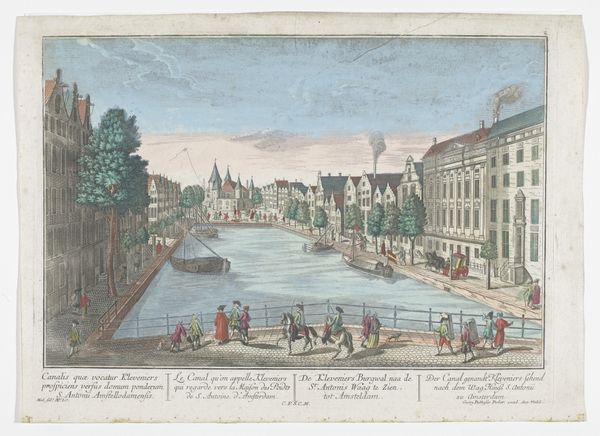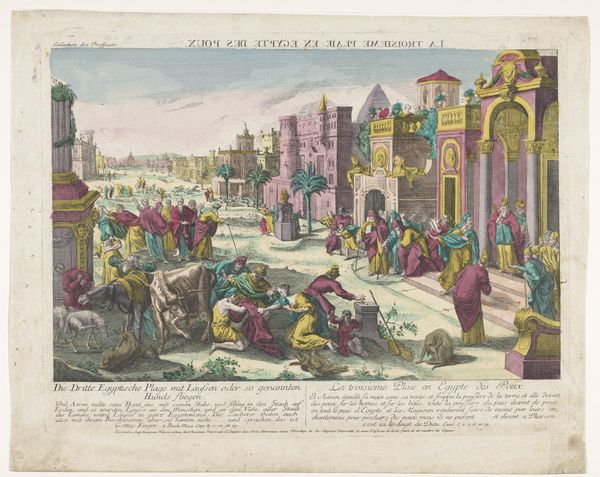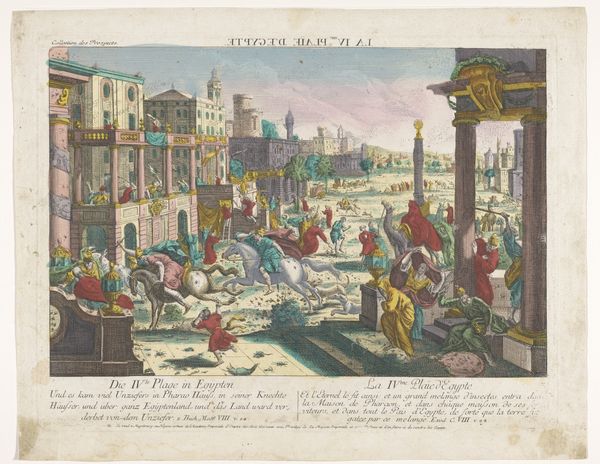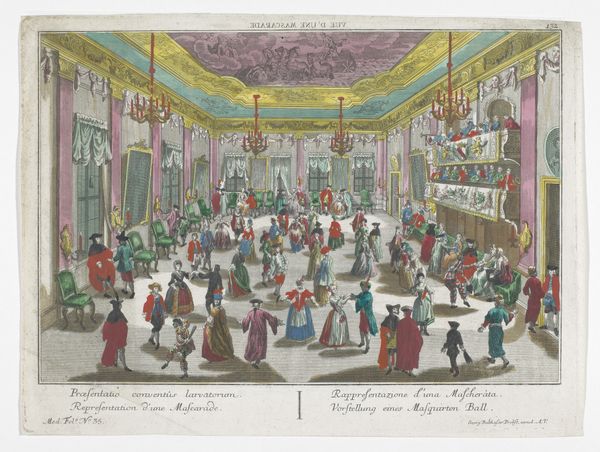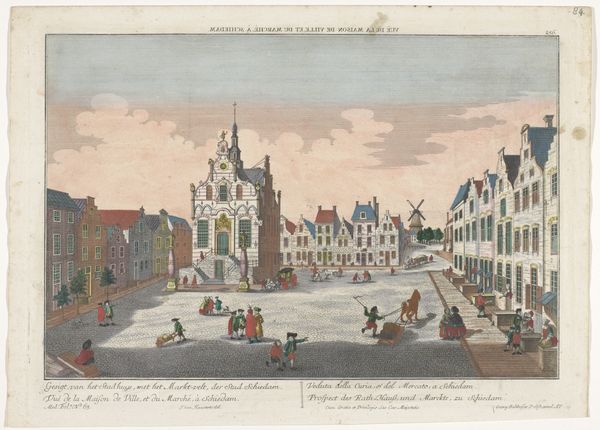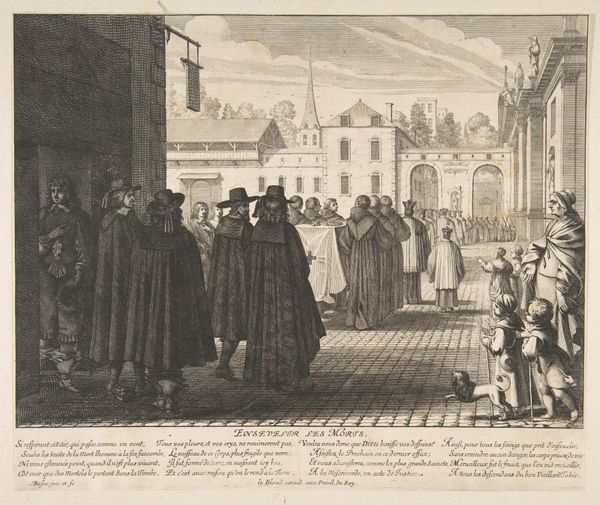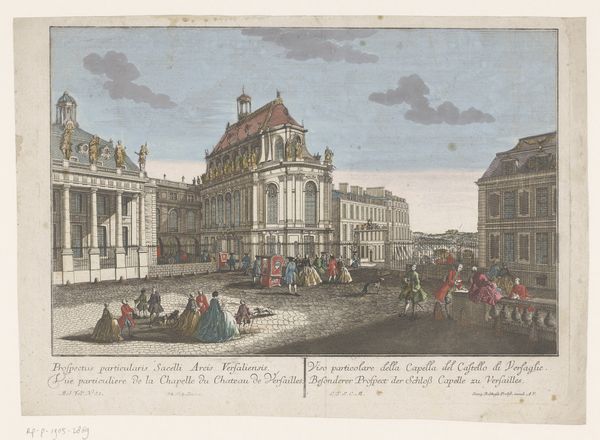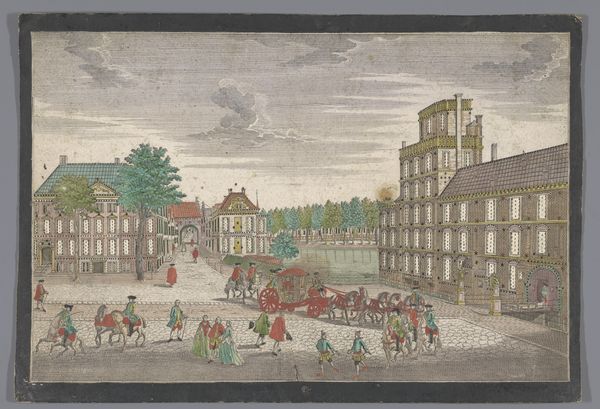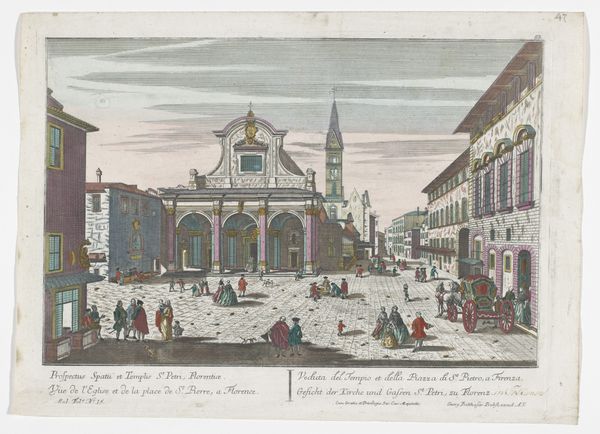
Dimensions: height 320 mm, width 432 mm
Copyright: Rijks Museum: Open Domain
Curator: We are standing before "The Return of the Prodigal Son," an engraving and etching produced sometime between 1742 and 1801. It's currently held here at the Rijksmuseum. Editor: My first impression is a rather stiff theatricality. It feels less like a moment of intimate familial reconciliation and more like a stage production set against an improbable cityscape. Curator: I see that theatricality as being indicative of Baroque sensibilities, emphasizing drama and grandeur. The scene unfolds within a formal architectural setting, transforming a biblical parable into a public spectacle, which really brings forward the role of theatre in how culture understands biblical stories. Editor: Indeed. Notice how the architecture—the palatial structures, the orderly streets—frames the figures. It creates a sense of order and civilization in the face of, let’s be honest, quite an abject figure in the Prodigal Son himself. He embodies disorder and shame returning to a space of rigid structure. It speaks to the social function of forgiveness, a public performance reintegrating the wayward into societal norms. Curator: And what of the details? Consider the costumes; everyone is dressed in the attire of the 18th century, a world away from biblical dress. Look, also, at how various social classes are represented. The image then becomes about reintegration, but it simultaneously reveals power dynamics and hierarchy. Editor: A potent visual metaphor for the complex relationship between personal failings and collective expectations within that era. It feels that this print would likely have reinforced established social orders as much as conveying any sort of gospel message. Curator: Precisely, and it suggests how such images functioned in public consciousness, normalizing existing structures of class and expectation. This work is a study in forgiveness on a societal level, with symbols that remind us of what society expects in behavior, belief and class. Editor: I concur. "The Return of the Prodigal Son" presents both a narrative of individual redemption and the socio-political values embedded within that era. It speaks volumes about art's engagement with, and reinforcement of, societal order.
Comments
No comments
Be the first to comment and join the conversation on the ultimate creative platform.
